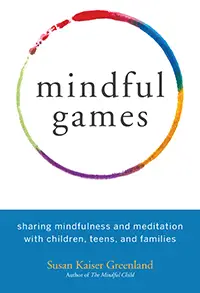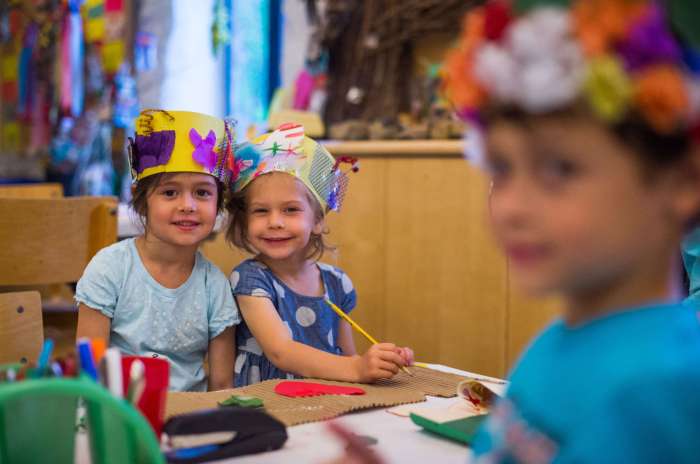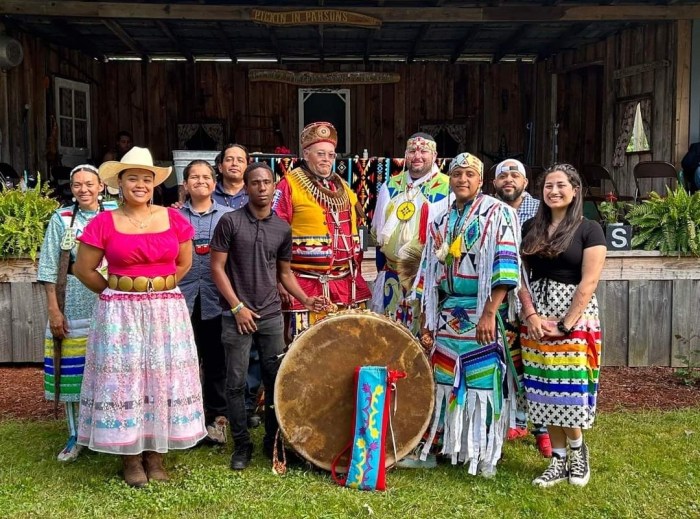Activities for kids to help them practice mindfulness, awareness, calmness, kindness, and compassion
Mindfulness is a popular buzzword these days. It is being used everywhere from the home, to the workplace, to how we parent and deal with other personal relationships. Now kids can get in on the action, too. Susan Kaiser Greenland is a mediation practitioner and an expert when it comes to teaching mindfulness to kids. She wrote the book Mindful Games as a way for children to develop focusing skills and respond in a calm way to situations. The games are simple and fun to play and Greenland suggests they are as equally beneficial for parents to play as well. Below is an excerpt from the book that includes two “mindful games.”
Drop the Monkeys
Drop the Monkeys is a remarkably useful visual demonstration of how kids work with the thoughts, emotions, and sensations that bubble up during anchor games. It is also a wonderful group facilitation tool that brings playfulness and a sense of humor to the check-ins that follow introspective practices. Using a children’s toy called Barrel of Monkeys as a prop, children joke about the thoughts that grabbed their attention.
With the help of a colorful plastic toy, we build a chain of monkeys to demonstrate how we can notice thoughts and let them go.
Life Skills: Focusing, seeing
Target Ages: Young children, older children
Leading The Demonstration
- Talking points: Do you ever notice that instead of paying attention to what’s happening in the moment, you become distracted by a thought about something that happened in the past or something that might happen in the future? What are some examples?
- In this game, each monkey represents a thought, emotion, or sensation that has grabbed our attention. Offer an example of a distracting thought and hold up a monkey.
- Now you give me an example. For each distraction we think of, I’ll add another monkey to the chain. Take three to four examples from children, and add a monkey to the chain for each example.
- These are all monkeys we can let go of, right? We don’t need any of these thoughts and emotions distracting us right now, so let’s drop them. Drop the monkey chain back into the plastic barrel.
- That was fun. Let’s try it again. Can you think of more examples?
|
Tips for Drop the Monkeys
- Although the barrel of monkeys is used more like a toy with younger children, it can be a helpful visual aid when working with older children (and adults!).
- Extend the demonstration by adding a discussion at the end. Here are some talking points: How often does your mind wander away from the present into the past or future? Do thoughts and emotions stay the same, or do they change over time?
- Drop the Monkeys helps children turn distractions into success stories. Hold up the monkey chain and ask children what to call the moment when they notice they’re distracted. Kids shout, “Mindfulness!” because they know where their minds are at that instant.
- Occasionally, children bring up a serious topic that merits further inquiry. If the timing and venue are right, there’s no better time to talk about what’s bothering them. But sensitive topics are sometimes raised at inappropriate times. If that happens, acknowledge the topic and the child’s concern, then shift the tone and subject matter of the discussion. Be sure to revisit the topic with the child privately at a more appropriate time and place.
|
Next, young meditators choose a breathing anchor by noticing where they feel their breath most easily—near their noses, in their chests, or inside their bellies.
Choose Your Breathing Anchor
We pay attention to the feeling of breathing where we notice it most—near the nose, chest, or belly—to help us relax and focus on the present moment.
Life Skills: Focusing
Target Ages: All ages
Leading The Game
- Sit with your back straight and your body relaxed, resting your hands gently on your knees, and close your eyes if you’re comfortable. Notice what it feels like to breathe in and out right now.
- Place one finger under your nose and feel your breath going in and out. Can you feel it?
- Next, place your hand on your chest, above your heart. Can you feel your hand moving when you breathe?
- Now place your hand on your belly and feel the movement of your breathing there.
- Put your hands back on your knees and breathe naturally. Notice where you feel the movement of your breath most easily. Is it just beneath your nose, at your chest, or at your belly?
- Now I’m going to ask you to make a choice and focus on your breathing where you feel it most. Wherever that is, that’s the place I’ll be talking about when I use the word “anchor.” We’re going to use this anchor for the rest of the game, so if you need to check again to see where it’s easiest to feel your breathing right now, go ahead.
- Great. Let’s try this for a few more breaths together. See if you can keep your body relaxed and lightly rest your attention on your anchor at the same time. This is how we rest in the feeling of the movement of our breath.
|
Tips for Breathing Anchors
- Choose Your Breathing Anchor can also be practiced lying down or standing.
- When leading more than one child, ask them to put one hand on their head when they’ve chosen an anchor. Wait for everyone to choose an anchor before you continue.
- It can be helpful to start the activity with a relaxing body scan. For example, “Feel your eyelids closed, feel your shoulders relaxed, feel your hands touching your knees, feel your legs touching the floor or the chair . . .”
- When children have had some practice sitting for longer periods, you can extend this activity with a few minutes of Mindful Breathing.
- To vary the game, ask children to choose another simple, neutral object to anchor their attention: a sound, a sensation, or counting, for example.
|
 |
From Mindful Games by Susan Kaiser Greenland © 2016 by Susan Kaiser Greenland. Illustrations © 2016 by Lindsay DuPont. Reprinted in arrangement with Shambhala Publications, Inc. Boulder, CO. |
RELATED: Get Our Weekend Planner in Your Inbox



















